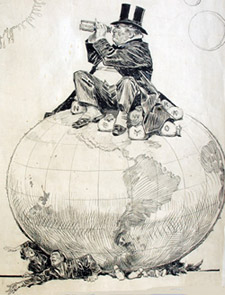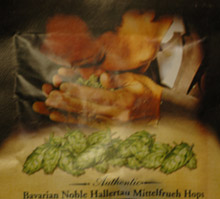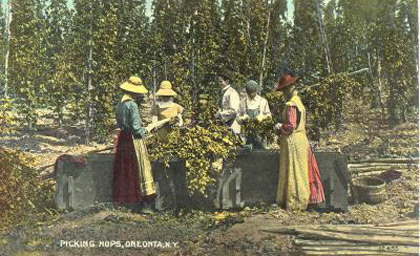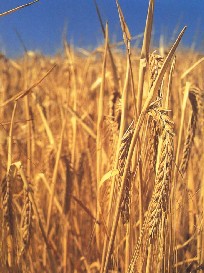 Here’s a scary thought from Ralph Olson of Hopunion, one of craft brewers’ go-to hop purveyors:
Here’s a scary thought from Ralph Olson of Hopunion, one of craft brewers’ go-to hop purveyors:
“They (large breweries around the world) want your hops now.”
Olson was talking on a “packed” tele-conference call this week, along with Ian Ward of Brewers Supply Group, updating members of the Brewers Association on the status of the 2007 hops and malt crops and prospects for 2008.
You may have already read more about beer price increases than you want to know, but just how serious things have become quite quickly was visually apparent during the presentation. So many brewery representatives showed up that the accompanying online slide show loaded as if we were all on dial-up connections.
Turnout increased three fold over a similar presentation in 2006.
“It’s a matter of economics and agronomics,” Ward said, while detailing the global aspect of what has happened. For instance, when the barley crop tanks in Australia, as it did last winter, fast-growing breweries in the Far East have to look elsewhere for malt. Prices go up.
Same with hops. Hops had been so cheap for so long that when larger breweries around the world needed “alpha” they just bought it on the spot market. When, for reasons that included simple bad luck and ongoing trends, alpha dried up this year they began wandering the earth with their wallets open.
[An amusing aside. Talking about hops, Matt Brophy of Flying Dogs Ales (as you know not a brewing giant, but one that long ago contracted to make sure its hops needs are met in 2008) described what brewers are used to:
“It’s like pizza. You pick up the phone and order pizza and you get pizza.
“You ordered hops and you got hops.”
Not now. No wonder the guy in Illinois is making pizza beer.]
Back to those big brewers. Even though they produce beers with little or no hop character they want high alpha hops because those are the most efficient (making beer at a lower cost). On an ongoing basis high alpha hops compete for space in the hopyard with aroma hops, which are what craft and other traditional brewers use more of.
Circumstances are similar with barley for malt. The competition for acreage with bio-fuels is but one example of non-beer related pressures on barley.
Those are short summaries of a complex matrix. The bottom line is that the cost of beer ingredients is going to continue to rise in coming years. Unless disaster strikes on many agricultural fronts in 2008 we aren’t likely to see jumps of 50% and 100% in malt and hops prices like this year, but they are going up.
To finish what Olson was saying at the top . . .
“European brewers will wire us money (for hops) right now,” he said, fortunately barely pausing before adding, “I’m not going to do it. We have to keep them here, don’t we?”
At the beginning of his book Ultimate Beer, Michael Jackson wrote about “where beer is grown.” I thought about that while Olson was speaking, then Ward. Both emphasized the partnership between the farmers who provide the ingredients and the brewers who turn the ingredients into beer. Hopunion and Brewery Supply happen to be part of that as well.
So there’s another reason that when you drink a beer brewed with hops instead of “alpha” and with a focus on malt flavor instead of efficiency that it’s fair to pay more. And more than simply the percentage increase in ingredient costs.
Somebody, a lot of somebodies along the way, went to the trouble to make it happen.
 Now this is getting personal.
Now this is getting personal. We should have seen this coming. The “hops crisis” has reached the point that
We should have seen this coming. The “hops crisis” has reached the point that  Here’s a scary thought from Ralph Olson of Hopunion, one of craft brewers’ go-to hop purveyors:
Here’s a scary thought from Ralph Olson of Hopunion, one of craft brewers’ go-to hop purveyors:
 What happens when you use about twice the malt and as many as five times the hops of a mass-market brew, like Budweiser or Miller High Life and commodity prices go up?
What happens when you use about twice the malt and as many as five times the hops of a mass-market brew, like Budweiser or Miller High Life and commodity prices go up?